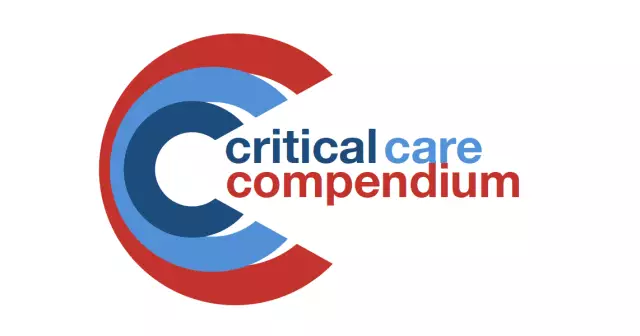- Author Rachel Wainwright [email protected].
- Public 2023-12-15 07:39.
- Last modified 2025-11-02 20:14.
Cordocentesis

Cordocentesis is one of the methods of invasive prenatal diagnosis, in which fetal umbilical cord blood is taken for further examination. This procedure is performed no earlier than the 18th week of pregnancy, the optimal period is 22-24 weeks. Cordocentesis is indicated for the detection of chromosomal and hereditary diseases, the establishment of Rh-conflict and hemolytic disease of the fetus.
Cordocentesis is carried out under the control of sonography (ultrasound), a thin puncture needle is punctured through the anterior abdominal wall of the expectant mother, and thus they enter the umbilical cord vessel. For research, 1-5 ml of cord blood is enough. Cordocentesis results are ready within a week.
Before carrying out the procedure, a written consent must be taken from a pregnant woman and all possible risks from this invasive procedure must be explained. The indications for cordocentesis are given by the doctor, but the decision must be made by the pregnant woman herself, after weighing all the possible risks and expediency of the study.
Indications for cordocentesis
- High risk of chromosomal diseases (based on the results of biochemical screening);
- Identification of abnormalities during an ultrasound scan of the fetus, which may be associated with chromosomal diseases (for example, a short femur, underdevelopment of the nasal bones, etc.);
- Parents have hereditary diseases if they already have children with congenital developmental disabilities;
- Suspicion of Rh-conflict, intrauterine infection;
- Suspected hemophilia;
In addition, indications for cordocentesis can be therapeutic measures. With this procedure, it is possible to introduce therapeutic agents into the vessels of the umbilical cord of the fetus (infusion of blood products or drugs).
Contraindications
Cordocentesis is contraindicated in infectious processes, in isthmic-cervical insufficiency (cervical incompetence), in large myomatous nodes (in the projection of the puncture), as well as in blood clotting disorders in a pregnant woman. Cordocentesis should also not be performed if a pregnancy is threatened.
Cordocentesis procedure
Before the puncture, an ultrasound examination of the fetus is performed to clarify its location, viability, clarify the location of the placenta, and the volume of amniotic fluid. It is optimal to perform a puncture of the umbilical cord in its free area, closer to the placenta. If cordocentesis is performed in the third trimester of pregnancy, then it is mandatory to use CTG (cardiotocography) to monitor the condition of the fetus.

Usually, pain relief is not required for cordocentesis. The procedure takes no more than 15-20 minutes. There are various techniques for this manipulation, in some cases, amniocentesis is first done (puncture of the fetal bladder with amniotic fluid intake), and only then the umbilical cord vessel is punctured. After the puncture, 1-5 ml of umbilical cord blood is aspirated for its further examination (biochemical, genetic and for the presence of infections).
After the end of cordocentesis, the fetus is monitored (heart rate, motor activity). According to indications, antibacterial drugs are prescribed (for the prevention of infectious complications), and means for relaxing the muscles of the uterus.
The results of cordocentesis allow us to determine the genome of the fetus with a very high degree of certainty, and thus exclude or confirm genetic and chromosomal complications.
Complications
Complications after cordocentesis are rare (less than 5% of cases).
Perhaps the development of bleeding from the puncture area (on average, bleeding lasts no more than 1 minute and stops on its own). Small diameter needles are preferred to reduce the risk of this complication. A hematoma of the umbilical cord can form at the puncture site, and usually does not affect the condition of the fetus. Usually, such complications occur against the background of impaired blood clotting.
Violation of the functional state of the fetus is the most frequent complication of cordocentesis, the risk of its occurrence increases with an increase in gestational age, and in the 3rd trimester is 3-12%. This complication is most often manifested by the occurrence of bradycardia (a decrease in the heart rate) and requires drug treatment.
In 1.4% of cases, pregnancy termination may occur. All women who are offered this procedure are afraid of this complication. But the risk of its occurrence is quite small.
Infectious complications in the form of chorioamnionitis are also extremely rare (about 1% of cases) and require appropriate drug treatment.
With Rh-conflict between the mother and the fetus after cordocentesis, the development of alloimmune cytopenia (in the baby) is possible. The risk of this complication increases after cordocentesis across the placenta. This condition requires specific treatment (administration of anti-Rhesus immunoglobulin).
If, according to the results of cordocentesis, fetal diseases are revealed, then only the parents have the right to decide the further fate of the unborn child.
Found a mistake in the text? Select it and press Ctrl + Enter.






